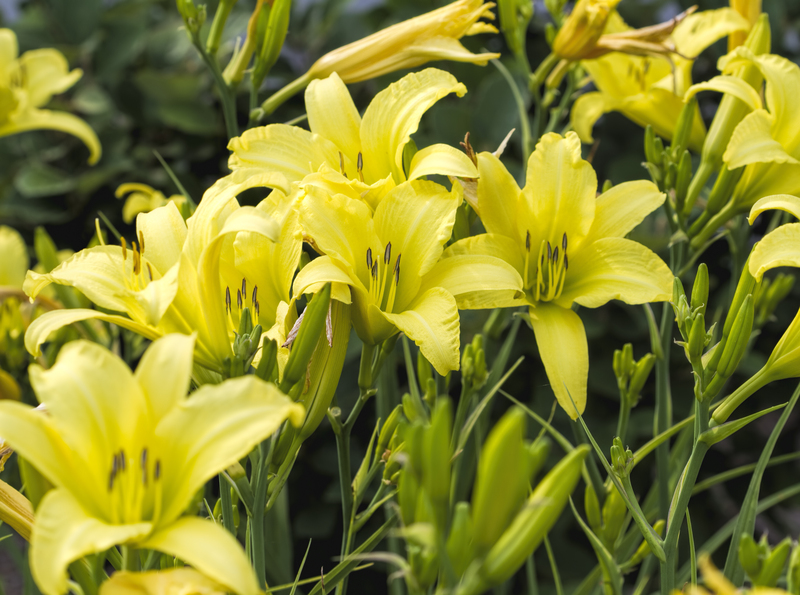Harnessing Nature: Protecting Your Garden from Windstorms
Posted on 25/08/2025
Harnessing Nature: Protecting Your Garden from Windstorms
Gardens are sanctuaries of life, beauty, and tranquility. Yet, when windstorms strike, they can transform a flourishing garden into a scene of devastation within minutes. Protecting your garden from windstorms isn't just about damage prevention--it's about harnessing the power of nature to keep your green haven thriving. In this comprehensive guide, discover how to shield your garden from strong winds using eco-friendly, effective, and sustainable strategies.
Understanding Windstorms and Their Impact on Gardens
Before we dive into practical solutions, it's critical to recognize how windstorms affect garden ecosystems. Strong winds can:
- Uproot or snap tender plants and young trees.
- Strip leaves, flowers, and fruits, causing plant stress.
- Spread debris and create hazardous flying projectiles.
- Damage delicate garden structures, such as greenhouses, fences, and sheds.
- Disrupt pollinators and beneficial garden wildlife.
Understanding these impacts highlights the importance of wind protection in gardening. By preparing ahead, you're not only safeguarding your plants but also supporting your local ecosystem.

How to Protect Your Garden from Windstorms
1. Assess Your Garden's Vulnerability
Every garden is different--size, location, plant types, and microclimates play a role in determining vulnerability. Start by:
- Mapping wind patterns: Observe the wind's direction and speed throughout the year to identify the most exposed area.
- Identifying windbreak gaps: Look for places where wind whips through without natural obstructions.
- Checking plant stability: Note which plants are most likely to suffer damage and require extra protection during storms.
2. Harness Nature: Create Windbreaks
One of the most effective ways to protect your garden from wind damage is to establish windbreaks. These act as natural or artificial barriers that reduce wind speed and shield your plants. Options include:
- Living windbreaks: Hedges, trees, and dense shrubs are both beautiful and efficient. Species like Privet, Laurel, or Arborvitae can create permanent wind barriers.
- Temporary windbreaks: Use garden fencing, bamboo screens, or even burlap stretched on stakes for quick, movable wind protection during the storm season.
Tip: Plant windbreaks at a distance of 5-7 times their mature height away from the area you wish to shelter for optimum effectiveness. Stagger rows and mix plant heights for layered wind filtering.
3. Strategic Planting for Maximum Wind Resistance
Harnessing nature involves choosing the right plants and arranging them wisely. Here's how:
- Select wind-tolerant plants: Hardy species such as Pyracantha, Lavender, Juniper, and Grasses have evolved to withstand wind. Place these in exposed spots.
- Group plants together: Cluster plants in dense groups to help them shield one another and reduce individual exposure.
- Optimize plant height: Arrange taller, robust plants on the windward side, tapering down to smaller, delicate plants in protected areas.
4. Strengthen Young Trees and Vulnerable Plants
Newly planted trees and tall perennials are especially susceptible to windstorms. Reinforce their stability with these techniques:
- Staking: Use soft ties and strong stakes to anchor young trees securely, but allow some movement--plants develop stronger roots when not fixed rigidly.
- Pruning: Remove dead or weak branches and thin dense growth to minimize wind resistance and prevent breakage.
- Mulching: Apply a thick mulch layer to insulate roots and reduce soil erosion from wind-driven rain.
5. Install Protective Structures
When environmental windshields fall short, structural solutions come to the rescue:
- Garden fencing: Semi-permeable fences (like slatted wood or woven panels) diffuse wind rather than block it, reducing turbulence that can cause more harm than help.
- Arbors and pergolas: These not only add architectural beauty but double as windbreaks for your most vulnerable beds.
- Row covers and cloches: Protect tender vegetables and seedlings with breathable, wind-resistant fabric tunnels or glass domes.
6. Utilize Raised Beds and Wind-Resistant Containers
Windstorms can wreak havoc on poorly positioned or lightweight pots. To fortify your garden against strong winds:
- Use heavy, low, or interlocking containers--these are less likely to tip over.
- Position pots in sheltered spots against walls, fences, or among clusters of sturdy plants.
- Build raised beds with sturdy edging such as stone, timber, or brick to help roots anchor and to keep soil in place during storms.
Sustainable Approaches to Garden Wind Protection
Protecting your garden from wind doesn't mean shutting nature out; in fact, working with ecological systems may offer the most effective solutions. Here are some eco-friendly approaches to wind protection:
Plant Diversification
- Diverse plantings create a natural tapestry of resilience, with differing heights, textures, and root systems that dissipate wind energy and prevent soil erosion.
- Mixing evergreen and deciduous species ensures some level of wind protection year-round.
Soil Health and Ground Cover
- Cover crops and mulches buffer the soil against both the wind and rain that often follow windstorms.
- Healthy, living soil with deep roots holds firm in turbulent weather.
Water-Wise Wind Protection
- After a windstorm, plants are often stressed and lose moisture quickly. Drip irrigation systems or strategic hand watering will help recovery.
- Install rain gardens or swales to trap runoff and reduce wind-driven erosion.
Preparing for Windstorm Events: Step-by-Step Action Plan
When a windstorm is forecast, every moment is precious. Here's a checklist to follow for windstorm garden preparedness:
- Secure loose items: Move pots, patio furniture, and garden tools indoors or anchor them to prevent damage.
- Check structural integrity: Inspect and strengthen trellises, fences, and supports as needed.
- Prune proactively: Remove any branches that might become dangerous projectiles.
- Cover vulnerable plants: Use fleece, hessian, or even bed sheets, anchored to prevent them blowing away.
- Water the garden: Slightly damp soil is less likely to erode than bone-dry dirt.
- Check drainage: Clear gutters and drains so rainwater moves effectively away from plant roots.
After the Storm: Garden Recovery Tips
Once the winds calm, prompt action helps restore your garden's vitality. Here are steps for post-windstorm care:
- Survey for damage: Walk through the garden, noting broken branches, uprooted plants, and debris.
- Rescue and reset: Replant anything that's blown over, water gently to settle roots, and stake if needed.
- Trim and tidy: Cut away shattered stems and leaves to limit disease.
- Feed and mulch: Support stressed plants with a balanced organic fertilizer and a new mulch layer to retain moisture.
- Monitor for pests: Wind-damaged plants are vulnerable to infestations; check regularly and act promptly.
Innovative Techniques for Windproofing Your Garden
Embracing Permaculture Principles
Permaculture, with its focus on sustainable design, offers powerful tools for harnessing nature's resilience. Techniques like contour planting, swales, and the use of "guilds" of mutually beneficial plants reduce windspeed and foster ecosystem stability.
Vertical Gardening as a Shield
Green walls aren't just visually captivating--they can act as natural wind deflectors. Train climbing plants on sturdy frames on the windward side of sensitive planting zones for additional protection.

Frequently Asked Questions about Garden Wind Protection
What are the best plants for a windbreak?
Evergreen options such as Holly, Yew, and Arborvitae are popular for dense, year-round screens. For flowering options, consider Rosa rugosa or hardy shrubs like Hawthorn and Sea Buckthorn.
How high should a windbreak be?
The higher your windbreak, the further the sheltered zone will extend. For most gardens, windbreaks of 2 to 3 meters (6 to 10 feet) are adequate. Remember, the protection zone extends roughly 5-7 times the height of your windbreak downwind.
Should I remove damaged branches after a storm?
Yes--prune cleanly to prevent disease and support healthy regrowth. Use sharp tools and don't leave jagged edges.
Conclusion: Cultivating a Wind-Resilient Garden
With climate change causing more extreme weather, protecting your garden from windstorms is a necessity for every gardener. By assessing vulnerabilities, embracing nature's solutions, and acting proactively, you transform your space into a resilient oasis that stands strong--even in the wildest winds. Remember, the goal is not just to mitigate damage, but to work in harmony with nature.
With thoughtful design, strategic planting, and ongoing care, your garden will not just survive the next windstorm--it will thrive because of it.
- Start planning your garden wind protection today--nature will reward your effort with abundance and beauty!



